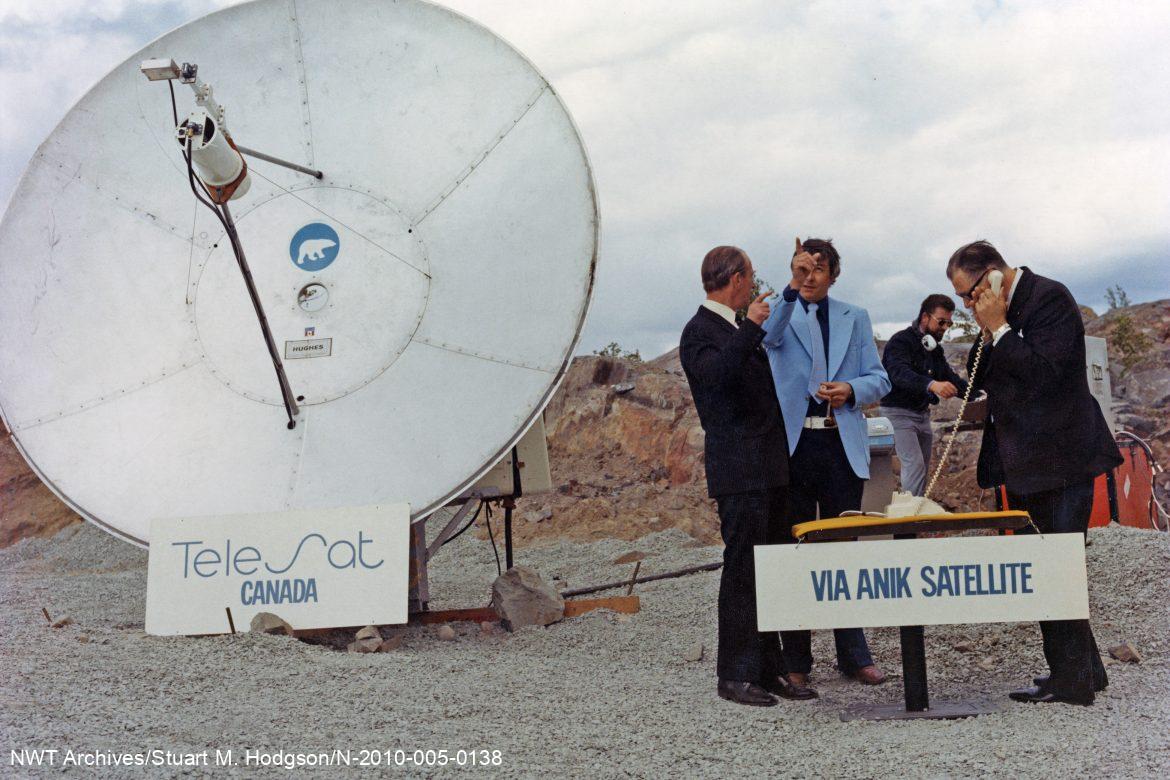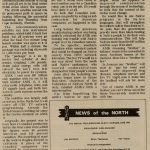1972
Anik A1
The November 9, 1972, launch of Telesat Canada’s Anik A1 satellite from Cape Kennedy, Florida, profoundly affected communications in the Northwest Territories. Anik (Inuktitut for ‘brother’) was the world’s first commercial, non-military communications satellite in a geostationary orbit. This type of orbit, 35,000 kilometres above the earth’s surface, meant the satellite remained stationary over a single point on the planet. A satellite dish pointed in the right direction would receive television and telephone signals to transmit into the Arctic communities.
Anik A1 brought the first live television broadcasts to many northern communities. Before Anik, the handful of north communities with television broadcast facilities had to rely on taped programs mailed from southern broadcast centres, rebroadcast from Yellowknife’s CBC studio, where the reception was often abysmal. Week-old hockey games and news programs long out-of-date were the norms in the north. The arrival of Anik not only brought current, up-to-date programming, but long-distance telephone services became reliable and much less dependent on atmospheric conditions for a clear signal.
After the launch, community-based satellite dishes appeared in remote northern towns and villages, and television signals were then re-broadcast locally. Anik A1 also meant that television programs produced in the north could be sent south, and 1978 saw the opening of the Northwest Territories’ first CBC television production facilities in Yellowknife.


